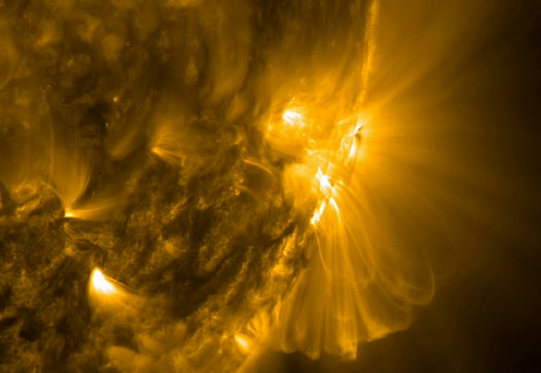
For the first time ever, physicists from Princeton Plasma Physics Laboratory (which they call PPPL, even though that's essentially just making a spitting noise) believe they have begun to understand how stars and galaxies form their magnetic fields.
We already know how planets get their magnetic fields. It starts with swirling plasma-like liquids at the planet's core. Those churning liquids conduct electricity and create an electric charge. However, until now, the origin of magnetic fields around stars and galaxies (which are by definition areas that share a large magnetic field) has been a mystery.
"Something is holding up the universe's magnetic fields for billions of years," said Amitava Bhattacharjee, co-author of a new paper on the subject, in a press release. "But how exactly does the universe get these persistent magnetic properties?"
To answer this question, theoretical physicists at the PPPL, which is funded by the U.S. Department of Energy's Office of Science, studied dynamos, which are blips of magnetism created by plasma-like fluids swirling around. Because plasma is electrically charged, if it moves in a certain way, it can create its own magnetic field, albeit a small one. Once that field is created, the continued churning can amplify that field, making its reach larger and larger.
If the same thing is happening at different points all around the plasma, you would have many small magnetic fields. So, the physicists wondered if there was some way for those magnetic fields to join hands and become one large force. That seemed unlikely because usually, we would expect that charge to dissipate over time. Rarely does anything in our universe go from dispersive and erratic to cohesive and ordered. Instead, we would usually expect each field to get weaker and weaker, dissipating as time goes on.
Still, the researchers ran with their hypothesis and used a computational system to run statistical simulations, which give a basic idea of how a system would behave under certain conditions. Indeed, they found that the magnetic fields were not just merging, but persisting.
"But in order to be conclusive about persistence for long times," said Bhattacharjee, "we must run simulations for very low dissipation."
Dissipation under these circumstances would be so low, computers simply can't do it, but the scientists were able to get very close, and their results showed that it seems very likely that the fields could merge and stay merged for billions of years. This is only the first step in understanding the genesis of magnetic fields, but it will open up exciting new avenues for research in the future. The research could also lend itself to new discoveries in fusion energy.
The paper was published in the journal Physical Review Letters.



by Miles Mathis
[Link]
Unifying the Photon
with other quanta
by Miles Mathis
[Link]